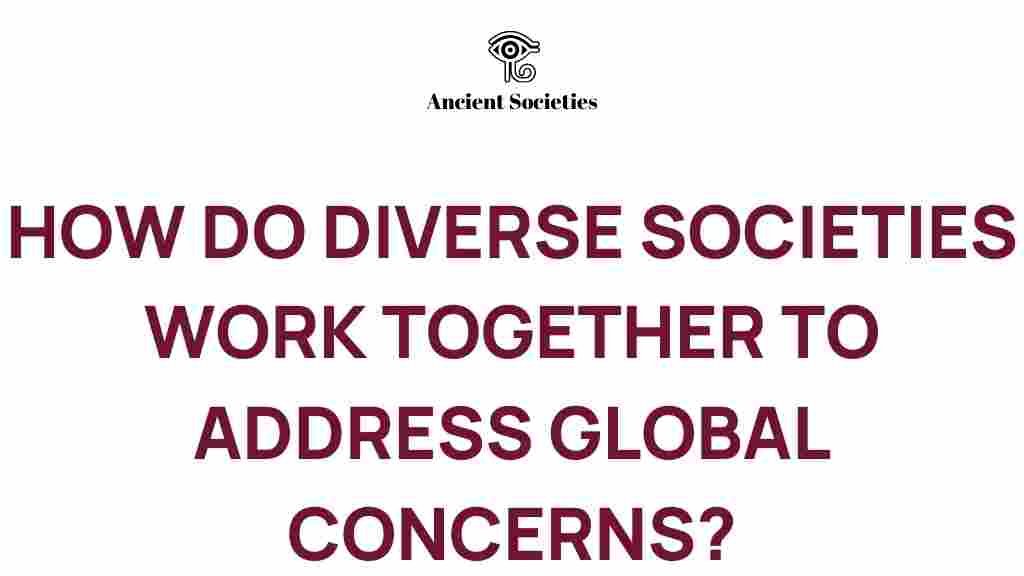Diverse Societies Unite for Global Solutions
In an increasingly interconnected world, the challenges we face are often global in nature. From climate change and economic instability to social inequality and public health crises, these issues transcend borders and require collective action. The concept of diverse societies coming together to address global concerns is not just a utopian ideal; it is a necessity for sustainable progress. Through collaboration, unity, and cultural exchange, we can foster international cooperation that leads to effective problem-solving and ultimately, a stronger global community.
The Importance of Diverse Societies
Diverse societies bring a plethora of perspectives, ideas, and solutions to the table. When individuals from different backgrounds collaborate, they create a rich tapestry of thought that can lead to innovative solutions for enduring social challenges. Here are some key benefits of embracing diversity:
- Broadened Perspectives: Different cultural backgrounds lead to varied viewpoints, enhancing creativity and problem-solving abilities.
- Enhanced Resilience: Diverse teams can adapt more readily to change, making them more resilient in the face of global challenges.
- Increased Innovation: A mix of ideas fosters innovation, allowing societies to develop unique solutions to common problems.
- Strengthened Community Bonds: Collaboration among diverse groups promotes understanding and unity, essential for a cohesive global community.
Step-by-Step Process for Building Collaborative Frameworks
Creating effective frameworks for international cooperation involves several strategic steps:
1. Identifying Common Goals
The first step in fostering collaboration among diverse societies is to identify shared goals. This involves:
- Facilitating dialogue to understand various perspectives.
- Highlighting areas of mutual interest, such as climate action or health initiatives.
- Creating a common vision that resonates across cultures.
2. Establishing Communication Channels
Effective communication is crucial for collaboration. Establishing reliable channels can be done through:
- Utilizing technology platforms to facilitate real-time communication.
- Encouraging regular meetings and brainstorming sessions.
- Creating multilingual resources to ensure inclusivity.
3. Promoting Cultural Exchange
Cultural exchange programs can significantly enhance understanding and unity among diverse societies. This can include:
- Organizing cultural festivals that showcase different traditions.
- Facilitating student exchange programs to foster youth engagement.
- Encouraging collaborative art projects that reflect shared narratives.
4. Implementing Collaborative Projects
Once a foundation has been laid, the next step is to implement collaborative projects aimed at addressing global concerns. This could involve:
- Forming partnerships between NGOs, governments, and local communities.
- Launching joint initiatives that tackle issues like poverty or environmental degradation.
- Sharing resources and expertise to maximize impact.
5. Evaluating and Adapting
Continuous evaluation is essential for the success of collaborative efforts. This involves:
- Regularly assessing the effectiveness of projects and partnerships.
- Collecting feedback from participants to refine processes.
- Adapting strategies based on changing circumstances and new insights.
Troubleshooting Common Challenges
While the benefits of collaboration among diverse societies are clear, challenges can arise. Here are some common issues and tips for overcoming them:
1. Communication Barriers
Problem: Language differences can hinder effective communication.
Solution: Utilize translation services and encourage the use of simple language to facilitate understanding.
2. Cultural Misunderstandings
Problem: Differences in cultural norms can lead to misunderstandings.
Solution: Provide cultural competency training to participants to promote sensitivity and awareness.
3. Varying Priorities
Problem: Different societies may have conflicting priorities.
Solution: Establish a clear framework for setting priorities that reflects the needs of all parties involved.
4. Resource Disparities
Problem: Uneven distribution of resources can create power imbalances.
Solution: Foster equitable partnerships that ensure all parties contribute and benefit fairly.
Conclusion: The Power of Unity in Diversity
As we navigate the complexities of the modern world, the need for international cooperation is more pressing than ever. By harnessing the strengths of diverse societies, we can unite to tackle global concerns with innovative and inclusive solutions. The journey towards a more collaborative approach to problem-solving not only addresses social challenges but also builds a stronger, more resilient global community.
In conclusion, embracing diversity through collaboration and cultural exchange is essential for sustainable development. As we continue to bridge borders and foster unity, let us remember that our collective strength lies in our differences, driving us towards a brighter future for all.
For more insights on fostering collaboration for global solutions, visit this resource.
This article is in the category Society and created by AncientSocieties Team
